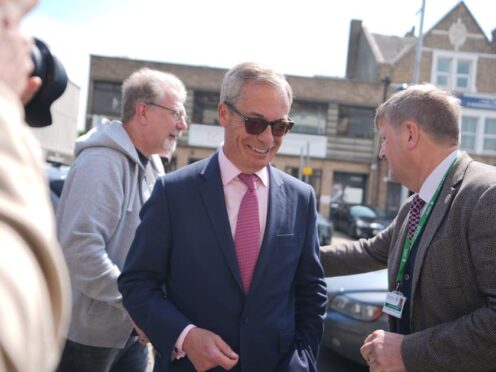Nigel Farage has announced his return to frontline politics, reclaiming the leadership of Reform UK and sending shock waves through the Conservative election campaign.
– Why would the Tories be worried?
Reform is polling at around 11%. At the last election in 2019 the party – then known as the Brexit Party – won precisely zero seats and it may struggle to take any this time, yet analysts agree it is likely to have a major impact on the result.
The general expectation is that it will take votes from the Conservatives which could be crucial in a number of constituencies where the contest is tight – particularly in those Brexit-voting “red wall” seats which the Tories took from Labour in 2019.
Last time, the party did not field candidates in constituencies being defended by the Tories – helping to pave the way for Boris Johnson’s landslide victory.
This time it is aiming to stand in every seat in England, Scotland and Wales, potentially intensifying the squeeze on the Conservative vote.
– Why is Mr Farage’s intervention so significant?
As by far the party’s best-known and most charismatic figure, supporters will be hoping his return to the centre stage will give them a fillip in the run up to polling day on July 4.

In addition, he is standing in the Essex seaside constituency of Clacton – once held by Ukip when he was the party’s leader – in what his eighth attempt to enter Westminster.
In order to do so, he will, however, need to overturn a 31,000 Conservative majority from the last election with only minor boundary changes.
– What is his aim?
Mr Farage says that with a Labour victory a “foregone conclusion”, he wants to supplant the Tories as the “real opposition” in the next parliament and make Reform the biggest party at Westminster after the subsequent election due by 2029.

He believes they can comfortably exceed the tally of four million votes which Ukip secured at their peak in the general election of 2015.
– How does he intend to achieve that?
Mr Farage said he wants to win over a “chunk” of the Conservative Party that has become increasingly disillusioned with the direction it has taken over the past decade and half.
He has pointed to the example of the Canadian Reform party which in the 2000s conducted a “reverse takeover” of the established Conservative party.
Its leader Stephen Harper went on to become prime minister, serving for nine years. He clearly hopes the same pattern can be repeated in the UK.
